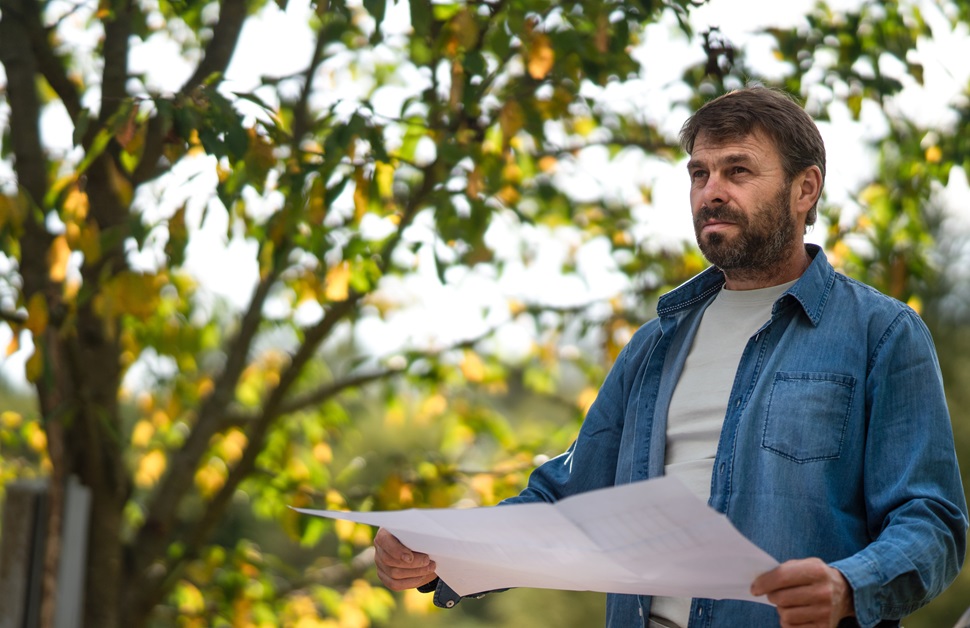
Nationwide Application of BNG
Introducing an emphasis on land management and the material consideration of important habitats, biodiversity net gain (BNG) has been a contentious issue in planning since it was originally announced back in 2018. Skip ahead to 2024, and mandatory biodiversity net gain is now a reality for the majority of developers, leaving them with no choice but to initiate ongoing management that will support natural habitats, rural communities, the BNG requirement, other related planning obligations, and their own likelihood of success in the planning application process.
The Environment Act 2021 brought the specific BNG planning obligation into law, and after a two-year transition period and several delays, it now serves as a key component in the development management procedure. The planning policy insists on a pre-development biodiversity value recorded based on the current state of the development site and a post-development biodiversity value predicted using further information and supporting evidence that will distinguish the likely outcome of the site once all development works have been completed.
Various methods can achieve BNG, such as seeing a new habitat created, enhancing habitats to an earlier habitat state or outsourcing off-site habitat if it isn’t possible to meet the biodiversity gain objective on-site. A statutory biodiversity metric will be used for measuring biodiversity and making the calculations, and between the before and after figures, data sets will outline the gap between the two readings. The level of biodiversity value will then need to be retained, increasing to a measurably better state by at least 10%, and lasting for a minimum of 30 years.
Biodiversity Net Gain Exemptions
Demonstrating compliance with the biodiversity net gain requirements is perfectly achievable providing a BNG assessment has been carried out by one of the qualified ecology team members at Arbtech. The subsequent biodiversity gain plan will then confirm to the local planning authorities that biodiversity net gain information has been retrieved and the biodiversity gain hierarchy has been consulted, leaving the results to see planning permissions granted.
Seeking further guidance to help with meeting the biodiversity gain condition and moving through the planning application stage is usually advisable. While it is often the case that mandatory BNG applies, it could also be that the new development is exempt from biodiversity net gain, and knowing this in the first place would avoid a lot of unnecessary stress. In an effort to assist developers with knowing whether or not BNG applies, the article below lists qualifying permanent and temporary exemption measures.

Exemptions from BNG
Through becoming a part of the planning process, biodiversity gain requirements became entangled with conservation covenants, local lists, local plans, national validation requirements, nationally significant infrastructure projects, protected species, sites of special scientific interest (SSSI), statutory protected sites and other policies relevant to the legal agreement from the UK government. For instance, overlap occurs wherever existing local policies apply, such as the Wildlife and Countryside Act 1981, the Town and Country Planning Act 1990 and the Conservation of Habitats and Species Regulations 2017.
A development subject to the biodiversity net gain regulations will require a BNG plan and report. In any other case, matters affecting rural communities such as an existing conservation covenant or protected species surveys will need to be addressed before applications submitted to the local council will result in planning permission granted. It is, of course, favourable to not need to show any emphasis on the BNG planning condition, but knowing if your project applies or not is crucial. Multiple exemptions are in place when it comes to BNG, including the examples detailed below:
Alternative Planning Applications
Planning decisions go hand in hand with biodiversity net gain based on assurances that the legal requirement can be met successfully. The additional information submitted via biodiversity gain plans will then act as the basis for the proposed approach of how mandatory BNG will be achieved.
Although the outcome of traditional applications for planning conditions will vary depending on the biodiversity net gain plan and report, alternative applications, certain permissions and other cases of stipulations could make adhering to BNG irrelevant. For instance, the following types of other routes to planning acceptance don’t apply to the policy, namely old mineral permissions, permitted development rights, pre-commencement condition agreements, simplified planning zones, subsequent technical details consent, successful enforcement appeals, transitional arrangements, and any acts to obtain planning permission via a development order such as local development orders and neighbourhood development orders.
Biodiversity Gain Sites
The ideal outcome from any development affected by the mandatory requirement would be to see a 10% biodiversity net gain increase provided on-site. If, however, the mitigation hierarchy doesn’t sufficiently initiate enough habitat creation and habitat enhancement to enhance biodiversity above the requested threshold, a last resort option would be to source off-site biodiversity gains as an alternative approach that will reach a higher percentage at or above 10% net gain to deliver BNG.
For the off-site provision to work, various biodiversity net gain sites across the country were made specifically to generate off-site gains. With spaces available, the site selection process would see one of our team looking over a biodiversity gain site register for a suitable patch of land. Statutory biodiversity credits will then be bought as off-site biodiversity units from professionals who own land, equating to the same quantity as the units that need to be increased within the red-line boundary of the site. Whenever biodiversity gain sites have been created with the purpose of farming statutory credits, the benefits they pose outweigh the potential shortfall in biodiversity value, making it exempt from off-site BNG rules.
Custom Build and Self-Build Developments
Under some circumstances, an exemption applies to self-build or custom housebuilding, as defined in Section 1 of the Self-Build and Custom Housebuilding Act 2015.
For any small-scale self-build developments or custom-build applications that involve nine or fewer dwellings and are within a site area no larger than 0.5 hectares, the exemption will apply providing the development consists exclusively of dwellings that are custom-built or self-built and abide by self or custom-build development principles.
De Minimis Exemptions
In minor developments, the de minimis exemption prevents the BNG objective from being applicable if the plans of the non-major development are only likely to cause minimal harm to irreplaceable habitats. More specifically, the de minimis threshold applies if the developer impacts less than 25 square metres of the on-site habitat at a biodiversity value higher than zero unless it is considered a priority habitat such as modified grassland, and on less than five metres of on-site linear habitats such as hedgerows and watercourses.
Any habitat lost or degraded to an extent that causes a drop in the site’s biodiversity value will contribute to development impacts on the natural environment. Habitat degradation as a result of the development process can occur if the condition or type of habitat is altered, reflecting a negative unit score. It is a more pressing issue if it involves an irreplaceable habitat, but accumulative harm to more than one linear habitat could cause a hindrance to minor applications, even if only as a result of hedgerow units or watercourse units.
Homeowner Applications
Small development projects such as home extensions, loft conversions or the creation of a conservatory are considered to be exempt from biodiversity net gain. It is made clear in a statement within the application form of householder applications that a householder development wouldn’t be required to operate within the parameters of mandatory BNG.
It is important, however, to differentiate between smaller developments managed by homeowners and residential or non-residential developments on a small site. A small sites metric was created for smaller sites, and after 2 April 2024, developers would need to use it if the planning project qualified as a minor development. For example, in a residential development, a small site would be classed as between 1 and 9 dwellings on a site of less than one hectare, and if the number of dwellings isn’t confirmed, a site area that is no larger than 0.5 hectares. Alternatively, in a non-residential development, a small site would be classed as less than 1,000 square metres of proposed floor space and a site area smaller than one hectare.
Ongoing Planning Applications
Although it is quickly becoming an irrelevant factor to mention due to the time that has passed since the universal rollout, any planning applications made at an earlier date before the start of the BNG requirements on 12 February 2024 will be exempt from meeting the conditions of the policy.
That said, unless the person submitting the application saw it approved prior to this date, it may be the case that the local council already enforced it. Local authorities all over the country were given the option to insist on compliance with the policy during the transition period, and this could be further compounded if the application relates to reserved matters.
Rail Transport Networks
As specified within Section 1 of the High-Speed Rail (Preparation) Act 2013, if a development is a part of or ancillary to a high-speed railway transport network, it is immediately classed as exempt.
Any development forming rail connections between Birmingham, the East Midlands, Leeds, London, Manchester and Sheffield are included, as well as any parts of the transport network that extend to airports, cycleways, footpaths, light railways and roads that are considered relevant by the secretary of state.
Urgent Crown Developments
Within section 293 of the Town and Country Planning Act 1990, Crown land has been guarded by protective measures to limit any potentially harmful development works. Current examples of Crown land include the premises of the Department for Culture, Media and Sport, the Driver and Vehicle Standards Agency (DVSA), the Forestry Commission, the Ministry of Defence, the Ministry of Justice, and security and intelligence agencies such as SIS, Mi5 and GCHQ.
Despite avoiding certain planning policies such as biodiversity net gain, an urgent Crown development will still need to approach any restrictions in the same way as another development from a member of the public. For instance, the Crown has to apply to the local authority for planning permission, hazardous substances consent, listed building consent, Tree Preservation Order (TPO) consent and demolition in a conservation area

See if BNG Applies to Your Planning Project
If even after reading the above exemptions, you still aren’t sure if the policy requirements apply to your development, feel free to reach out to our team, and using the minimum information about your proposed project, we can confirm if the 10% BNG increase is needed. Our team follows strenuous good practice guidelines, maintains an understanding of updates from each responsible body such as CIEEM, DEFRA and Natural England, offers top-quality BNG guidance, and operates all over the country to provide a firm insight into your local planning authority.
Before it is possible to outline planning permissions, you will first need to determine whether you need help with biodiversity net gain. Simply speak to our team online, over the phone, via email or on social media, and we can give you a price for a BNG assessment and plan on your development site and choose a relevant date to undertake the survey. After evaluating information regarding the existing habitat and attending the site to record all habitats present, the biodiversity metric will be used to take the two readings, and with it, we can provide evidence and produce the next steps to help guarantee granted planning permission.

There are no comments yet. Why not get involved?